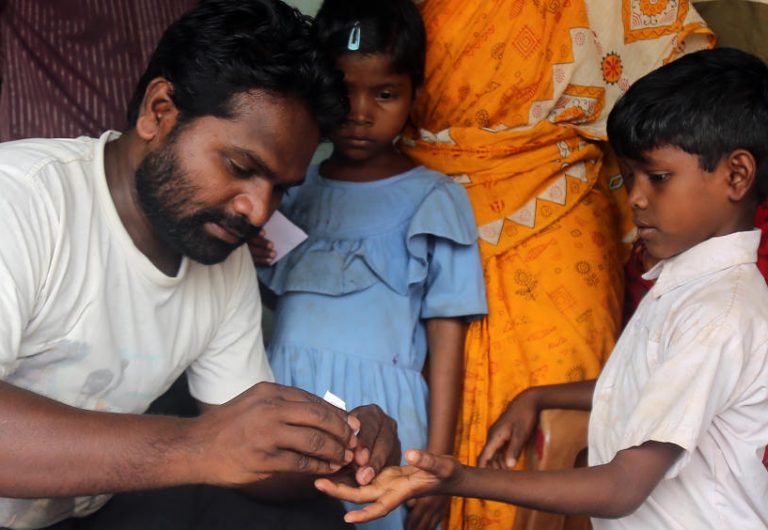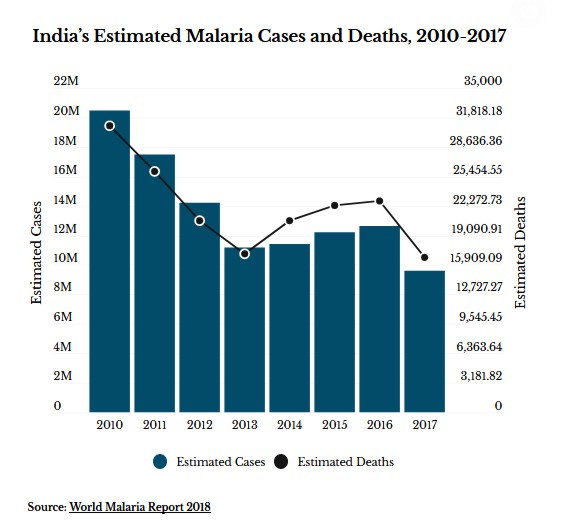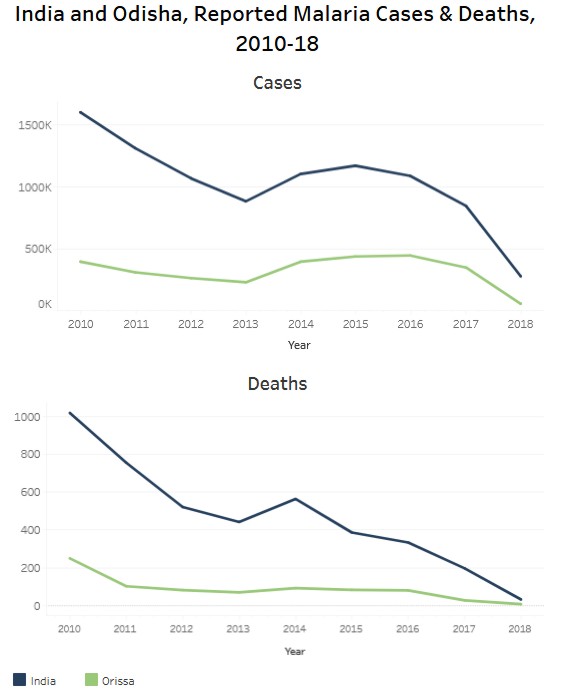New Delhi: Among the 11 nations with 70% of the world’s burden of malaria, only India has managed to reduce its disease burden, registering a 24% decrease between 2016 and 2017, according to the World Malaria Report 2018.

With about 9.5 million malaria cases in 2017, down 3 million cases since 2016, India is no longer among the top three countries with the highest malaria burden. However, 1.25 billion Indians–94% of its population–are still at risk of malaria, the report noted.
Globally, the progress made against malaria has stalled for the second consecutive year: The annual report produced by the World Health Organization (WHO) revealed a plateauing. In 2017, there were an estimated 219 million cases of malaria, compared to 217 million the year before. Previously, people contracting malaria globally had been steadily falling, from 239 million in 2010 to 214 million in 2015.
India has set 2030 as the target year for eliminating malaria. It currently accounts for 4% of global malaria cases and 52% of malaria deaths outside the African region.

India’s success is “largely due to substantial declines of the disease in the highly malarious state of Odisha, home to approximately 40% of all malaria cases in the country”, said the WHO spokesperson in an emailed interview.
Odisha reported an 80% decline in malaria cases and deaths in 2017. Reported malaria cases in the state also declined from 347,860 in 2017 to 55,365 in 2018 (January to September) and deaths dropped from 24 to four during the same period, according to government data.
IndiaSpend spoke to experts on how Odisha succeeded in fighting the disease and what can the rest of the country learn from its example.
Odisha took the battle against malaria to remote forests
As we said, Odisha accounted for 40% of India’s malaria burden, and its remote, heavily-forested regions with scattered tribal populations were the most vulnerable.
The state had seen early success in malaria reduction between 2010 and 2013 but cases started increasing again and the state recorded the highest number of cases–444,843–in 2016.
Around the same time in 2016, the state government started implementing a programme called Durgama Anchalare Malaria Nirakaran (elimination of malaria in inaccessible regions), in short DAMaN.
The programme was implemented in 21 of the state’s most high-burden districts and involved mass screening for malaria. Positive cases were treated and supervision intensified, mosquito control measures were adopted and regular health education activities were held throughout the year.
“Odisha government showed political commitment by allocating resources and working with development partners in looking at the big picture and ensuring last-mile connectivity,” said H S D Srinivas, head-Health, Tata Trusts, a charity that partnered with the state government in the programme.
“Government made up its mind that [malaria elimination] is a cause worth investing in,” said Srinivas.

Source: National Vector Borne Disease Control Programme, National Health Profile 2015
“To control malaria, you have to control the malaria parasite and mosquitoes that transmit the parasite,” said Madan Mohan Pradhan, additional director, public health for vector borne diseases, department of health in Odisha, who conceived and formerly headed the programme.
(Read IndiaSpend’s September 2017 account of how the programme is helping Odisha fight malaria here).
Health authorities devised mosquito control measures that included interventions and behaviour change. Indoor insecticide spraying, reduction of mosquito breeding spots and free distribution of long-lasting insecticidal nets (LLINs) were some of the measures initiated. LLINs, installed around beds, also kill the mosquitoes on contact and are considered a critical malaria-control intervention.
In 2017, 11 million LLINs were distributed in Odisha, enough to cover every resident in high-endemic regions of the state. While LLINs had been distributed before too, this time it was accompanied by mass screenings.
All villagers in the endemic districts were tested for malaria parasite twice a year–before and after monsoons–through rapid diagnostic kits. The conventional method of diagnosing malaria by smear microscopy–blood smear examined under microscope—is cumbersome and challenging in inaccessible regions, while rapid diagnostic kits diagnosed malaria under 10 minutes. ASHAs or village health volunteers were trained to use the kits and then hand over free drugs to those tested positive.
Testing everyone and not just those who have a high temperature is critical because malaria does not always cause a fever–called afebrile or asymptomatic malaria. The disease may stay in the bloodstream without any symptoms, causing weakness and anaemia and sustaining malaria transmission.
“The national approach [used earlier] only tested those who reported high fever; this means that the asymptomatic load remains unchanged and malaria was never fully defeated,” said Subhasis Panda, senior general manager, Livolink Foundation, an implementing partner of Tata Trusts.
The state government has allocated Rs 120 crore for conducting mass screenings under DAMaN. While the rapid testing kits and drugs are provided by the state, the LLINs were donated by Global Fund to Fight AIDS, Tuberculosis and Malaria—a global partnership that provides financial aid to fight these diseases.
“Currently there are enough funds to conduct the activities but we need to ensure the LLINs are replaced in one-and-a-half years,” said Pradhan. The LLINs last for about three years and since they were distributed in 2017, they will work till 2020.
India needs to tighten malaria surveillance, invest more in campaign
Since 2000, India has reduced malaria deaths by two-thirds and reduced reported malaria cases by almost half.
In 2017, India launched its five-year National Strategic Plan for Malaria Elimination. The plan is a landmark in India’s fight against the disease that shifted focus from malaria “control” to “elimination”. The plan provides a roadmap to end malaria in 571 of India’s 678 districts by 2022.
With 24% decline in malaria cases, India is on track to reduce malaria cases by 20-40% by 2020, said the World Malaria Report 2018.
However, there are many road-blocks. India has “weak” malaria surveillance and only 8% of its estimated cases are reported in the national system–second worst in the world–as per the World Malaria Report 2017.
Further, India’s spending on malaria is amongst lowest in South East Asia, less than $1 per person at risk according to the 2018 report.
Lessons from Odisha can easily be replicated in other malaria-endemic regions of the country and it is important that the fight against the disease is not allowed to lose its momentum, according to experts. “There have been many ups and downs when it comes to malaria,” said Pradhan, invited to present his findings at the launch of the report at Mozambique. “We need to keep up the efforts [to control malaria] for five years at least to reach the elimination goal.”
(Yadavar is a principal correspondent with IndiaSpend.)
Correction: The story has been updated to show that DAMaN was implemented in 21 districts and not eight as we said earlier; that long-lasting insecticidal nets were first distributed in 2017 (not 2016) and will work till 2020 (not 2019); and that Madan Mohan Pradhan is additional director, public health for vector-borne disease, department of health in Odisha. We regret the errors.
Courtesy: India Spend
